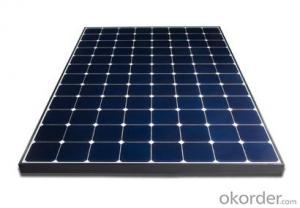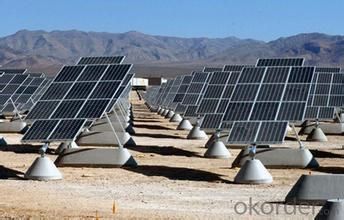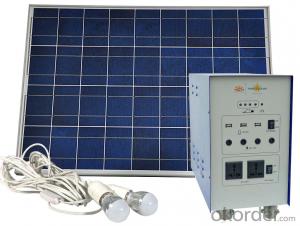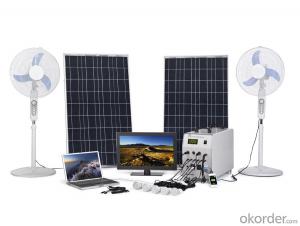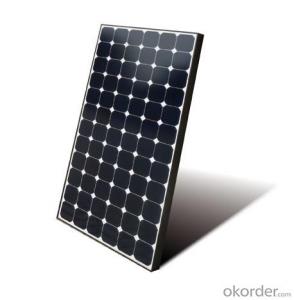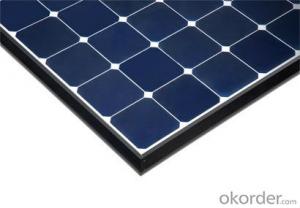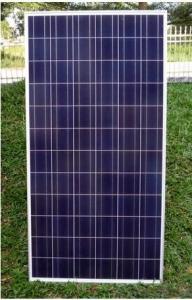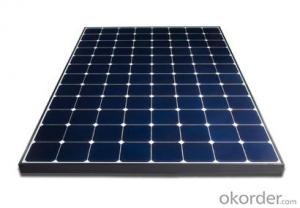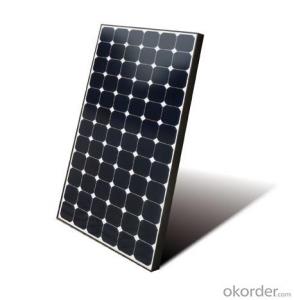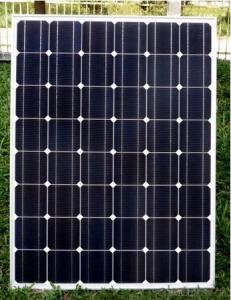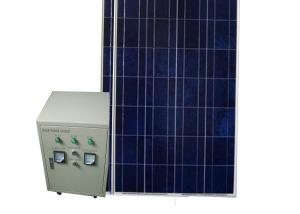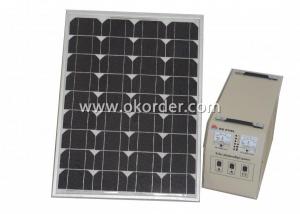Solar Energy Systems Nappanee Indiana - CNBM On Grid System 9000W with Certificate UL TUV CE
- Loading Port:
- Shanghai
- Payment Terms:
- TT OR LC
- Min Order Qty:
- 100 watt
- Supply Capability:
- 1000 watt/month
OKorder Service Pledge
OKorder Financial Service
You Might Also Like
Specification
CNBM On Grid System 9000W with Certificate UL TUV CE
Product description
They range from small residential and commercial rooftop systems to large utility-scale solar power stations. Unlike stand-alone power systems, a grid-connected system rarely includes an integrated battery solution, as they are still very expensive. When conditions are right, the grid-connected PV system supplies the excess power, beyond consumption by the connected load, to the utility grid.
Connection of the photovoltaic power system can be done only through an interconnection agreement between the consumer and the utility company. The agreement details the various safety standards to be followed during the connection.[4]
Electrical connections are made in series to achieve a desired output voltage and/or in parallel to provide a desired current capability. The conducting wires that take the current off the modules may contain silver, copper or other non-magnetic conductive [transition metals]. The cells must be connected electrically to one another and to the rest of the system. Externally, popular terrestrial usage photovoltaic modules use MC3 (older) or MC4 connectors to facilitate easy weatherproof connections to the rest of the system.
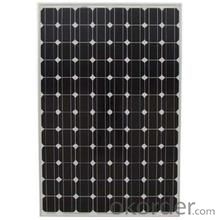
Application
Industrial
Commercial
Residential
Feature
Residential, grid-connected rooftop systems which have a capacity more than 10 kilowatts can meet the load of most consumers.[2] They can feed excess power to the grid where it is consumed by other users. The feedback is done through a meter to monitor power transferred. Photovoltaic wattage may be less than average consumption, in which case the consumer will continue to purchase grid energy, but a lesser amount than previously. If photovoltaic wattage substantially exceeds average consumption, the energy produced by the panels will be much in excess of the demand. In this case, the excess power can yield revenue by selling it to the grid. Depending on their agreement with their local grid energy company, the consumer only needs to pay the cost of electricity consumed less the value of electricity generated. This will be a negative number if more electricity is generated than consumed.[3] Additionally, in some cases, cash incentives are paid from the grid operator to the consumer.
Packaging
With carton and box
- Q: What maintenance is required for a solar energy system?
- Regular maintenance is required for a solar energy system to ensure optimal performance. This includes cleaning the solar panels, checking for any debris or shading that could affect their efficiency, inspecting the electrical components for any damage or loose connections, and monitoring the system's performance through regular data analysis. Additionally, it is necessary to maintain and replace the batteries (if present) and conduct routine inspections to identify and address any potential issues.
- Q: Can solar energy systems be used in areas with limited access to solar energy demonstration projects?
- Yes, solar energy systems can still be used in areas with limited access to solar energy demonstration projects. While demonstration projects are valuable for showcasing the benefits and feasibility of solar energy, they are not a requirement for utilizing solar energy systems. With proper planning and assessment, solar energy systems can be installed and used effectively in areas with limited access to demonstration projects, helping to harness clean and renewable energy sources.
- Q: Can solar energy systems be used in camping or outdoor activities?
- Yes, solar energy systems can be used in camping or outdoor activities. Portable solar panels, solar-powered lanterns, and solar chargers for electronic devices are some examples of solar energy systems that are designed for outdoor use. These systems harness the power of the sun to provide renewable energy, making them an eco-friendly and convenient solution for powering equipment and devices during camping or other outdoor activities.
- Q: Can solar energy systems be used for powering security cameras?
- Yes, solar energy systems can be used to power security cameras. Solar panels can be installed to capture sunlight and convert it into electricity, which can then be used to power security cameras and other surveillance equipment. This provides a sustainable and cost-effective solution for remote or off-grid locations where traditional power sources may be unavailable or expensive to connect. Additionally, solar-powered security cameras can operate independently and are not affected by power outages, making them a reliable option for continuous surveillance.
- Q: Do solar energy systems require a lot of maintenance?
- No, solar energy systems generally require very little maintenance.
- Q: Can a solar energy system be integrated with other renewable energy sources?
- Yes, a solar energy system can be integrated with other renewable energy sources. This integration, often referred to as hybrid renewable energy systems, allows for a more reliable and efficient energy generation. By combining solar energy with other sources like wind, hydro, or geothermal, the system can compensate for fluctuations in generation and provide a consistent power supply. This integration helps maximize renewable energy utilization and promotes a sustainable energy mix.
- Q: Can solar energy systems be combined with energy storage technologies like batteries?
- Yes, solar energy systems can be combined with energy storage technologies like batteries. This combination allows for the storage of excess solar energy generated during the day, which can be used during times when the solar panels are not producing enough energy, such as at night or during cloudy weather. Energy storage technologies like batteries help in optimizing the use of solar energy and ensure a more consistent and reliable power supply.
- Q: Can solar energy systems be used in powering amusement parks?
- Yes, solar energy systems can definitely be used in powering amusement parks. Solar power has become increasingly popular in recent years due to its numerous benefits. Amusement parks require a significant amount of energy to operate rides, lighting, and other facilities. By utilizing solar energy systems, parks can reduce their reliance on traditional energy sources and significantly lower their operational costs. Solar panels can be installed on rooftops, parking lots, or open areas within the amusement park to harness the power of the sun. These panels convert sunlight into electricity, which can be used directly to power various park operations. Additionally, excess energy generated during peak sunlight hours can be stored in batteries for use during cloudy or nighttime periods. The advantages of using solar energy in amusement parks are manifold. Firstly, it is a renewable and sustainable energy source, meaning it does not deplete natural resources or produce harmful emissions. This makes solar energy an environmentally friendly choice, aligning with the growing emphasis on green initiatives and reducing carbon footprints. Furthermore, solar energy systems can provide a stable and predictable source of power. Amusement parks often experience high peak energy demands during busy periods, such as weekends or holidays. Solar panels can easily handle these fluctuations and ensure a reliable power supply, reducing the risk of power outages or disruptions. Moreover, installing solar panels can enhance the overall image and brand of an amusement park. By demonstrating a commitment to sustainable practices, parks can attract environmentally conscious visitors and differentiate themselves from competitors. This can contribute to a positive public image and potentially increase visitor numbers. In conclusion, solar energy systems can undoubtedly be used to power amusement parks. Their ability to generate clean, reliable, and cost-effective electricity makes them an ideal solution for powering the energy-intensive operations of amusement parks. By harnessing the power of the sun, parks can reduce their carbon footprint, lower operational costs, and enhance their overall appeal to visitors.
- Q: Are there any insurance requirements for installing a solar energy system?
- Yes, there are typically insurance requirements for installing a solar energy system. Homeowners or businesses installing a solar energy system are often required to have adequate insurance coverage to protect against potential damages or liabilities associated with the installation and operation of the system. This may include general liability insurance, property insurance, and potentially additional coverage specific to solar energy installations. It is important to consult with your insurance provider and review local regulations to determine the specific insurance requirements for installing a solar energy system in your area.
- Q: What is the role of solar concentrators in solar energy systems?
- Solar concentrators play a crucial role in solar energy systems by focusing sunlight onto a smaller area, increasing its intensity and enabling more efficient energy conversion.
Send your message to us
Solar Energy Systems Nappanee Indiana - CNBM On Grid System 9000W with Certificate UL TUV CE
- Loading Port:
- Shanghai
- Payment Terms:
- TT OR LC
- Min Order Qty:
- 100 watt
- Supply Capability:
- 1000 watt/month
OKorder Service Pledge
OKorder Financial Service
Similar products
Hot products
Hot Searches
Related keywords
